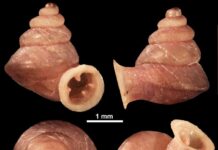A STUDY published in Nature reports two major versions of SARS-CoV-2 coronavirus and confirms that the genetic difference does not contribute to disease severity. Host factors such as age, white blood cell levels, and overactive immune defenses contribute significantly to how people get the virus.
Researchers from Fudan University and several other institutions in China examined the genetic makeup of the virus from 94 cases and 221 genomes in the Global Initiative on Sharing Avian Influenza Data (GISAID) database. They identified the two major versions of SARS-CoV-2 coronavirus, called clade I and clade II, which differ in two mutations consistent with previous analysis. However, the new data show that there is no significant difference in the disease severity as exhibited by patients infected with either version.
The genetic analysis showed that clade I was linked with the cases from the Wuhan seafood market, while clade II was found in early cases that were not linked with the seafood market. Furthermore, the researchers concluded that the coronavirus transformed from animal to human transmission in late November 2019.
Host factors were found to be the best predictor of disease severity. These factors include age and immune system conditions such as lymphocytopenia and cytokine storm. Lymphocytopenia observed in COVID-19 patients is characterized by low levels of white blood cells, particularly CD4+ and CD8+ T cells. Cytokine storm is a condition where small protein immune messengers called cytokines are in overdrive, attacking major organs instead of protecting them. High levels of cytokines IL-6 and IL-8 were observed in patients with severe COVID-19 symptoms.

















